#Nimerigar
Text
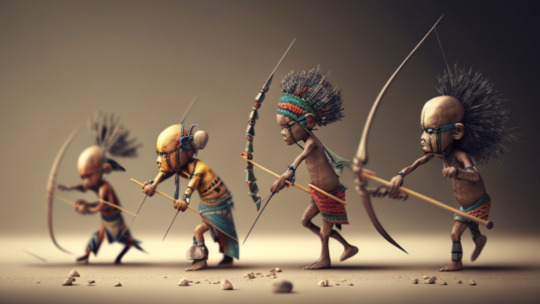
The Nimerigar (people eaters), a story of tiny cannibals with poisoned arrows. Passed down generation to generation by the Shoshone Tribe of Native American Indians, but like the discovery of Homo Floresiensis, is there more to it than just a story?
Find out here: https://thatididntknow.com/the-nimerigar-a-tiny-race-of-cannibals/
#tidk#myth#legend#cannibals#native american#pygmy#little people#nimerigar#that i didnt know#did you know#til#ysk#history
19 notes
·
View notes
Text

Anyone else tired of Americans/Brits/Aussies referring to every single folkloric humanoid as a fairy? It's like djinn, aziza, duende, vættir, nymphs, iratxoak, mannegishi, underjordiske, elves, aluxob, ta'ai, kobolder, yokai, polevik, mimih, dwarves, nimerigar, menehune, and nymphs don't even exist to them.
16 notes
·
View notes
Text
Random thought I just realized.
How many people in the G/t community even have heard stories about tinies being cannibals who target humans? Especially children?
Did no one grow up with grow up stories of Teihiihan and Nimerigar?
Tales of how the fae would trick children into the woods to eat them?
About the little people who live in the rocks and rivers just waiting for you to step off the path?
Invisible creatures only visible to children?
I feel that there's a lot of potential
1 note
·
View note
Text
This may look like a battle between the Nimerigar and a shrub, but it's not. Don't let this gardening stand-off fool you. There is more going on here.

#children's books#darkline#zak#illustration#monsters#alphabet book#picture book#creatures#monstrousalphabet#creepy#nimerigar#monster alphabet#abc#abc book#d&d
1 note
·
View note
Text
Nimerigar

Nimerigar with rudimentary tools
The Nimerigar are a race of highly aggressive humanoid creatures predominantly mentioned in Paiute and Shoshone stories, though many cultures across the Americas share similar stories. Often described as dangerous man-eaters and ‘enemies of mankind’, the creatures pretty consistently average a little under a meter tall with an almost lichen hued skin tone, large black eyes, and a wide mouth full of an unreasonable amount of razor-sharp teeth. Reports of the Nimerigar and their cousins are far less common now as their numbers have dwindled since the Westward Expansion in the 19th century, but from what I’ve been able to find, they still live in small tribes where any too sick, old, or injured to continue to contribute are put down with a sharp blow to the head. The camp itself is usually well hidden, but small hunting parties will sometimes venture out at night in search of prey armed with ambush tactics and bows loaded with poisoned arrows, though the type of poison seems to vary from tribe to tribe so you’re better off just not getting shot in the first place.
Some stories claim the Nimerigar keep their hearts separate from their bodies in a sort of den or hollow-like nest in their camp. This doesn’t seem to render them immortal or immune as a decent blow to the head is still all it really takes to kill them but say you somehow find the nest before they find you (to be fair, they aren’t very bright), it grants you an opportunity to exterminate the entire tribe then and there as, if the heart stops, the body dies regardless of distance.
Fire is another option, but I’ll admit I mostly got that idea from a movie and I haven’t tested it for fear of accidentally starting a forest fire.
#monster#Nimerigar#Pigmy#People eater#Om&n#Of monsters and nothing#journal#Hunting#the mummy#Scorpion King
2 notes
·
View notes
Text
Lore Episode 14: The Others (Transcript) - 7th September 2015
tw: death of children, childhood illness
Disclaimer: This transcript is entirely non-profit and fan-made. All credit for this content goes to Aaron Mahnke, creator of Lore podcast. It is by a fan, for fans, and meant to make the content of the podcast more accessible to all. Also, there may be mistakes, despite rigorous re-reading on my part. Feel free to point them out, but please be nice!
No one likes to be alone. Even introverts need to come out for air every now and then, and experience human contact. Being around others has a way of calming our souls, and imparting a bit of safety, even if only in theory. But sometimes, even crowds of people and scores of friends can’t fight the crippling feeling that we are, in the end, isolated and alone. Humans have become very good at chasing away that feeling, though. When darkness threatens to cut us off from the world around us, we discovered fire, and then electrical lights. We use technology today to help us stay connected to friends and relatives who live thousands of miles away, and yet the feeling of loneliness grows deeper every year. We’ve learnt to harness tools to fight it, though. In ancient cultures, in the days before Facebook and the printing press, if you can fathom that, society fought the feeling of being alone with story. Each culture developed a set of tales, a mythology and surrounding lore, that filled in the cracks. These stories explained the unexplainable, they filled the dark night with figures and shapes, and they gave people, lonely or not, something else to talk about – something other. Some tales were there to teach; some preached morals through analogy; others offered a word of warning or a lesson that would keep children safe. In the end, though, all of them did something that we couldn’t do on our own: they put us in our place. They offer perspective. It might seem like we’re at the top of the food chain, but what if we’re not? From the ancient hills of Iceland and Brazil, to the black-top streets of urban America, our fascination with the “others” has been a constant, unrelenting obsession. But while most stories only make us smile at the pure fantasy of it all, there are some that defy dismissal. They leave us with more questions than answers, and they force us to come to grips with a frightening truth: if we’re not alone in this world, then we’re also not safe. I’m Aaron Mahnke, and this is Lore.
In Greek Mythology, we have stories of creatures that were called the Pygmy. The Pygmies were a tribe of diminutive humans, smaller than the Greeks, who were often encountered in battle, and these stories have been around for thousands of years. We even have images of Pygmy battles on pottery found in tombs dating back to the 5th century BC. 1st century Roman historian, Pliny the Elder, recorded that the Pygmies were said to go on annual journeys from their homeland in the mountains. They would arm themselves for battle and climb onto their rams and goats, and ride down to the sea, where they would hunt the cranes that nested at the shore. In South America, there are tales of creatures called the Alux, a figure of Mayan mythology. They said to be between one to two meters tall, hairless, and dressed in traditional Mayan clothing. Like the Pukwudgies of the Native American tribes of North America, the Alux are said to be troublemakers, disrupting crops and wreaking havoc. According to tradition, the Alux will move into an area every time a new farm is established. Mayan farmers were said to build small, two-storey houses in the middle of their cornfields, where these creatures would live. For the first seven years, the Alux would help the corn grow and patrol the fields at night. Once those seven years were up, however, they turned on the farmers, who would put windows and doors on the little houses to trap the creatures inside. The ancient Picts of the Orkney Islands, off the north-eastern tip of Scotland, spoke of a creature they called the Trow, or sometimes, the Drow. They were small, humanoid beings, described as being ugly and shy, who lived in the mounds and rock outcroppings in the surrounding woods. Like many of the other legends of small people around the world, the Trow were said to be mischievous. In particular, they were said to love music - so much, in fact, that it was thought that they kidnapped musicians and took them back to their homes so that they could enjoy the music there. In addition, it was common for the people of Shetland to bless their children each Yule day as a way of protecting them from the Trow. Nearby, in Ireland, there are tales of similar creatures, small and hairless, called the Púca. The Púca are said to stand roughly 3ft tall, and like the Trow, they too live in large, stone outcroppings. According to legend, they can cause trouble and chaos within a community, so much so that the local people have developed traditions meant to keep them happy.In Country Down, for instance, farmers still to this day leave behind a “Púca’s share” when they harvest their crops. It’s an offering to the creatures, to keep them happy and ward off their mischief. But the Púca isn’t unique to Ireland. In Cornish mythology, there’s a small, humanlike creature known as the Bucca, a kind of hobgoblin. Wales is home to a similar creature with a reputation as a trickster goblin. It was said to knock on doors and then disappear before people inside opened them. And in France, a common term for stone outcroppings and megalithic structures is pouquelée. Oh, and if you’re a fan of Shakespeare’s play “A Midsummer Night’s Dream”, you might remember the character Puck, the clever and mischievous elf. The name Puck, it turns out, is an Anglicization of the mythical creature, Púca, or Puck. I’ll stop, but I think you get the point. There doesn’t seem to be a culture in the world that hasn’t invented a story about smaller people, the “others” that live at the periphery of our world. It’s not surprising, either – many of these cultures have a deep history of invading nations, and that kind of past can cause anyone to spend a lot of time looking over their shoulder. These stories are deep, and often allegorical; they mean something, sure, but they aren’t rooted in reality. No one has captured a Púca or taken photographs of an Alux stepping out of its tiny, stone building. But that doesn’t mean there’s no evidence. In fact, there are some legends that come a lot closer to the surface than you might have thought possible - and that might not be a good thing.
The Shoshone tribe of Native Americans that live in the Rocky Mountains have been there for thousands of years. Their lands span much of the countryside around the Rockies, but they also built seasonal homes, up high in the mountains, sometimes 10,000ft above sea level. One of the Shoshone legends is that of a tribe of tiny people, known as the Nimerigar. One story tells of a man who rode up a small trail into the Wind River Mountains to check on his cattle. While he was travelling the narrow path, one of these creatures stepped out and stopped him. This was his trail, the little man said, and the rancher couldn’t use it anymore. The man ignored the tiny person and continued on toward his cattle, and this angered the Nimerigar. The tiny creature took aim with his bow and fired a poisonous arrow at the man’s arm. From that day on, the story goes, the rancher was never able to use his arm again. The Nimerigar are just myth, or at least that’s what most people think. But in 1932, that perception changed, when two prospectors, Cecil Mayne and Frank Carr, found a mummy in a cave in the Pedro Mountains of Wyoming. They said it had been sitting upright on a ledge in the cave, as if it had been waiting for them. The mummy was small (honestly, it’s only about six inches tall), but had the proportions of an adult. The two men had found it on a ledge, sitting upright, mummified by the dry Wyoming climate. After its discovery, the mummy changed hands a number of times. Photographs were taken, as well as an x-ray, but by 1950, it had vanished, never to be seen again. In 1994, after an episode of Unsolved Mysteries asked viewers to help them locate the missing mummy, a second mummy came to light. This one was a female, with blonde hair, but it was roughly the same size, and also from a mountain cave. This time, medical experts were able to study it, and what they discovered was shocking: it wasn’t an adult after all, it was an infant that had been born with a condition known as Anencephaly, which explained the adult-like proportions of the body and head. Like the first mummy, this second one disappeared shortly after the examination, and the family who owned it vanished with it.
Halfway around the world, in Indonesia, there are stories of small, humanlike creatures called the Ebu gogo. Even though their name sounds a lot like a Belinda Carlisle cover band, these creatures were said to strike fear in the hearts of the neighbouring tribes. According to the story, the Ebu gogo had flat noses and wide mouths, and spoke in short grunts and squawks. They were known to steal food from the local villages, and sometimes even children, and apparently one of these incidents from the 1800s led to an extermination. The Nage people of Flores, Indonesia, claimed that generations ago, the Ebu gogo stole some of their food, and the Nage people chased them to a cave, where they burnt them all alive - all but one pair, male and female, that managed to escape into the woods. The stories are full of imagination and fantasy, but in the end, they might hint at something real. In 2003, archaeologists discovered human remains in a Flores cave. The remains, dubbed Homo Floresiensis, weren’t ordinary, though. They were small adults, very small in fact, at just one meter tall. They were nicknamed hobbits, if that helps you picture them. Small people, found in a cave near the Nage tribe of Flores. It seems like the stories were proving true. The trouble was the age of the remains. The oldest skeletons clocked in at around 38,000 years old, and the youngest at about 13,000. In other words, if the Nage actually had attacked a tribe of tiny people, it had happened a lot more than a handful of generations ago. Unless you believe them, that is – in that case, the stories hint at something darker, that the Ebu gogo were in fact real, that they might still inhabit the forests of Flores, and that ultimately, the stories were telling the truth. It sounds enticing. In fact, I think anyone would be fascinated by such a notion. Unless, that is, these stories were about something in your own backyard.
On the night of April 21st, 1977, a man named Billy Bartlett was driving through the town of Dover, Massachusetts, with two of his friends. On Farm Street, they began to drive past a low, rough stone wall that was well-known to the locals. As they did, Billy noticed movement at the edge of his vision, and turned to see something on the wall unlike anything he had ever seen before. It was a creature, with a body the size of a child’s, long, thin limbs, elongated fingers and an oversized, melon-shaped head. Billy claimed it was hairless, and that the skin was textured. He even reported that it had large, orange-coloured eyes. Billy later sketched a picture of the thing he had seen, and then added a note to the bottom of the page: “I, Bill Bartlett, swear on a stack of Bibles that I saw this creature”. A whole stack of Bibles, you say. Well, alright then. Something like this probably happens every year – somewhere in the world, someone sees something weird, their mind twists their memories, and all of a sudden, they think they encountered Abraham Lincoln in a hot tub. But Billy’s story had some added credibility. You see, just two hours after he saw… whatever it was that he saw, 15-year-old John Baxter was walking home from his girlfriend’s house, about a mile from Farm Street. He claimed that he saw something walking down the street toward him. According to him, it was roughly the size and shape of a small child, and when the figure noticed him, though, it bolted for the woods. John, being a highly intelligent teenager with powerful decision-making skills, decided that midnight was the perfect time to chase something strange into the woods, and so he followed after it. What happened next was a literal, over-the-river-and-through-the-woods chase. When Baxter finally stopped to catch his breath, though, he looked up to see that the creature was standing beside a tree just a few yards away from him, watching him. That’s the moment when common sense took over, and John ran for his life. Later that night, he drew a sketch of what he had seen. He also told the police about it. He described a creature that had the body of a child, a large, oval-shaped head, thin arms and legs and long fingers. On their own, each of these sightings could have been easily dismissed by the authorities, but together, they presented a powerful case. Still, any chance of their similarity being labelled a coincidence vanished less than 24 hours later. 15-year-old Abby Brabham and 18-year-old Will Taintor were out for a drive on Springdale Avenue in Dover, when they saw something at the side of the road, near a bridge. It was on all fours, but both of the claim they got a very good look at it, and each of them described the creature as hairless and child-sized, with an overly large head and long, thin limbs.
Three separate events, spanning two nights, three unique sightings, yet one seemingly impossible description, each captured in eerily similar sketches. There were small discrepancies regarding the colour of the creature’s eyes, but outside of that, the consistency was astounding. Each of these eyewitnesses had seen something they couldn’t explain, and each of them seemed to have observed the same thing. What I find most fascinating, though, is that nearly 30 years later, in 2006, the Boston Globe interviewed Billy Bartlett, and he’s never wavered from his story. He’s experienced embarrassment and ill treatment because of it over the years, of course, but though he’s clearly transformed from a teenager who saw something into a responsible, middle-aged adult, that maturity hasn’t chased his testimony away, no matter how fantastical it might sound. They’ve called it the “Dover Demon” ever since that week in 1977. Others have since come forward with similar sightings. One local man, Mark Sennott, said he had heard rumours in his high school in the early 70s of something odd in the woods. Sennott even claimed that he and some friends observed something odd near Channing Pond in 1972 that fits the description from these later reports. Channing Pond, mind you, is right beside Springdale Avenue, where Taintor and Brabham said they saw their Dover Demon. Clearly, something was in those woods. Like most legends, this one will continue to cause debate and speculation. There have been no more sightings since 1977, but even still, the Dover Demon has left an indelible mark on the town and the surrounding area.
It’s true, we don’t like to be alone, but I think in the process of creating the stories that have kept us company for centuries, humanity has also created convenient excuses. All of these human-like creatures have acted as a sort of stand-in for human behaviour and accountability. In an effort to absolve ourselves from the horrible things we’ve done, we seem to instinctively invent other beings on which we can set the blame. But what if the others really were there, long before we wove them into our stories? What if they were less an invention, and more a co-opting of something we didn’t fully understand? Perhaps in our effort to shift the blame, we altered the source material a bit too much, and in doing so we buried the truth under a mountain of myth. There have been countless theories surrounding the 1977 sightings in Dover. Some think it was a type of extra-terrestrial known as a “grey”; others have actually suggested that it was just a baby moose. I know, that does seem like an odd way to explain it – only two moose sightings were recorded in Massachusetts in 1977, and both of those were out in the western part of the state, far from Dover. Add in the fact that a yearling moose weighs more than 600lbs and I think that it’s clear that this theory just won’t hold up. But there’s a different and more textured theory to consider. If you remember, Billy Bartlett saw the Dover Demon sitting on an old stone wall on Farm Street. Well, just beyond that wall is a large, stone outcropping that the locals have always called “The Polka Stone”. Some think that the stone’s nickname is a mispronunciation of a different word, though. The original name, they say, was the Pooka Stone. It could just be folklore, perhaps the tall tales of an early Irish settler, told to a group of children around the foot of an enormous rock. Unfortunately, we’ll never know for sure, but if you really want to see for yourself, you’re always welcome to head over to Dover, and take a drive down Farm Street. The wall, and the woods beyond, are still there, still dark, and still ominous. Just be careful if you travel there at night – you never know what you might see at the edge of your headlights.
This episode of Lore was produced by me, Aaron Mahnke. You can learn more about me and the show, as well as info about live events, episode transcripts and more, over at lorepodcast.com, and be sure to follow along on Twitter, Facebook and Instagram, @lorepodcast. This episode of Lore was made possible by you fine listeners, [Insert sponsor break]. And finally, your ratings and reviews on iTunes make all the difference for this show, so please take a moment today to fill one out. You can find links to help you do that at lorepodcast.com/support. If you want to help this show even more, Lore is on Patreon – that’s a platform that allows fans to support their favourite creations with monthly donations. And if you want more Lore in your life, backers at the $5 level get access to two extra, ad-free, brand new episodes each month that aren’t in this podcast feed. They’re short and sweet, but they’re fully produced and beautiful to listen to. Of course, I’m biased, but you’ll have to take my word for it. Just visit patreon.com/lorepodcast to sign up today and start enjoying new Lore episodes. Thanks for listening.
#lore podcast#podcasts#aaron mahnke#pygmy#trow#puca#puck#nimerigar#ebu gogo#san pedro mountains mummy#dover devil#folklore#uk#ireland#indonesia#wyoming#massachusetts#transcripts#14
2 notes
·
View notes
Link
0 notes
Text
The Days of Clay - Pt. 2: Beasts, Peoples, and Class Concepts
Part 2 of my paleo/neolithic RPG setting concept. Here are the concept overviews for the more “living” aspects of the world.
You can read the full setting rundown all at once on my WordPress.
Feel free to a leave a comment, and share!
Saurians
Found throughout the tropical and otherwise hot regions of the world, from searing deserts to sweltering jungles, saurians are a common form of fauna across the equatorial continents. Though most saurians are quite similar to all other animals – skittish, of varying size, and uninclined to hunt humans save under ideal circumstances – the great Thunder Lizards are well feared, and stories of them are known the world over in tales of dragons and other great wyrms. Saurians are cold blooded and include such species as the tyrannosaur, the carnotaur, velociraptor, and oviraptor as prominent therosaurs. There are also the mighty thagosaurs, the ceratops, brachiosaurs, and diplodosaurs as among the grandest of the Thunder Lizards. The hunting of these beasts outstrips even the danger of hunting Great Mammals like the mammoth, though that has not stopped some of the most fearsome warrior-tribes from attempting and succeeded at such feats. Tales of the taming of Thunder Lizards are also common, though even less substantiated. Not that factuality matter more than a good story to most shamans and their listeners.
Ape-Men
Ape-Men comprise all those varieties of bipedal or mostly-bipedal humanoid creatures who straddle the line between ape or monkey and man. Those who live in areas where there are no ape-men to be found might think that the distinction between an ape-man and a monkey, or an ape-man and a rather blunt and hairy person might be indistinguishable. Those who have ever seen an ape-man know the uncanny appearance by which those creatures can be identified. Though some believe that the ape-men are just as intelligent as humans, they have no language, no writing, and use but the most primitive of technologies. Some are quite small, while larger breeds can also be found, even in high altitudes and frigid environs. Most ape-men tend to cluster in basic den formations, and though they will not craft tools or shelters, they are sometimes smart enough to set up basic lean-tos, making use of existing caves or other helpful geography, and may pick up and utilize bones and rocks as basic weapons and the like. Though not very violent by nature, ape-men tend to compete for similar habitats as humans, and so often come into conflict with them. Ape-men clans who have lost great numbers to humans before tend to avoid all future confrontations even generations later.
Lizardmen
Similar to ape-men, lizardmen are the various breeds of bipedal, dexterous lizards who can sometimes be found in the territories of other saurian species. Little is known about how they differ from other scaled creatures save for their intelligence. Like ape-men, despite not having any known language or culture, the lizardmen have shown some ability to use tools, and tend to cluster in social groupings. Many of these dens are found in places most humans know as “Shatterlands” – angular rock formations common in deserts and some jungles, which various lizardmen of different species seem to all gravitate towards as ideal homesteads, even displacing other saurians in the process. Lizardmen range from the great crocolids and saurids to the more diminutive skinks and kobolds. They are uncommon outside of their usual ranges, and some say they are even dying off little by little.
Great Mammals
Found throughout the world, though most of all within the great tundra of northern lands like Batyr, Siral’ik, or Dziil, there are those creatures known as the Great Mammals. Also known as Great Beasts or Great Hairy Ones, these are the mammalian creatures who nonetheless rival the largest saurians in size and power. Mammoths, shellbacks, giant sloths, sabercats, dire wolves and dire bears – these are a source of both great danger and great plenty to those tribes who share their lands. Some Great Mammals may be found in southern reaches, such as with the giant ape-kin, or the elephants, giraffes, and the like which wander the savannahs of Noba Rugna. It is uncommon for saurians and Great Mammals to share habitats, though the bloodletting when the two come into contact can be significant and godlike.
Great Coldbloods
Separate from the saurians, Great Coldbloods is a catch-all term for creatures such as the giant snakes, colossal toads, and other creatures which do not share the same general markers of “true saurians” like the therosaurs, brachiosaurs, or ceratops. Though the distinction is rather vague, it is important to tribal peoples who live in southern lands, as Great Coldbloods tend to not be as aggressive and predatory as saurians – they are no less dangerous, but they prefer to stick to their well-defined hunting and ambushing grounds. Some Great Coldbloods are significant enough to take on and fell saurians in their own right, and command just as much fear as any other terrifying predator.
Great Shellhides
Perhaps the broadest category by which the human tribes of the world define the largest types of various animals, Great Shellhides comprise all those cold-blooded, hard-skinned, and boneless creatures which crawl beneath the earth. Though most “bugs” are insignificant things perhaps defined by powerful poisons to compensate for their size at the deadliest, Great Shellhides are monstrosities able to go claw-to-claw against other Thunder Beasts and Great Fauna. Hellspinners, elephant beetles, stoneborers, sand-devils – though some can be quite docile despite their size, most pose significant threats to any humans who dare to trifle with them. Within the seas there are also the giant crabs, temple clams, and devil-lobsters, among others. Though most hunters would not dare attempt to assault any Great Shellhide due to their impervious armor and the terrible ways they are capable of killing, the promise of tender blue-meat and a rich supply of chitin for crafting means that to many, the risk is worth the reward.
Leviathans
Encompassing all those beings which make sailors quail at the mere mention of their names, there are the seabound leviathans. Leviathans are not a single species, nor even a clade, but rather a term for any aquatic monster which is defined by its immense size. Whales are often considered leviathans, along with the great sharks such as the megalodon. More terrible are the leviasaurs – mosasaurs and ichthyosaurs and the like. Kraken, or the god-squids, are another class much feared by all who know of them, as well as the sea-serpents and dragon-turtles. Despite their fearsome reputation, most leviathans pose no great threat to humans, confined as they are to the abyssal sea. It is more common for even the bravest of seafaring tribes to meet their end by exposure or storms than by the direct attack of a leviathan, though that is seldom comforting to most sailors. The hunting of leviathans is considered by many to be the penultimate feat of prowess – to slay something as large and terrible as a Thunder Lizard, yet within their own element.
Giants
Sometimes conflated with ape-men, giants are among the rarest of all the near-human species. Defined as massive humanoids, tending to display blunted manlike features and standing anywhere from over two to five times the height of an adult human. Giants are usually found in reclusive dens, or solo, in the wilder areas of wherever humans might be found. The very largest are confined to the north and far east, in the most remote reaches of lands like Fjallgarth and Siral’ik. Little is known of giants, save for their prodigious size, ferocity when challenged, and rather hideous appearances. Much like ape-men, lizardmen, or parcies, they seem to have no higher culture, yet maintain a level of intelligence above most base animals. They may use fallen trees or great stones as makeshift tools, and some have even been said to herd Great Mammals, though it is unknown if there are any truth to these stories, or if the giants merely hunt such beasts. Most giants prefer to avoid humans when they can, unless in a desperate or vengeful position, as it is a common feat of strength for warriors of the northern lands to seek out and slay giants when they can.
Parcies
Pronounced “park-ees” and often referred to as “little folk”, “sprites”, “gremlins”, and numerous other regional names. Parcies are a strange class of creatures believed to be offshoots of humans or ape-men. Though there are many different breeds of parcie, they are often defined by short stature, and intelligence somewhere between humans and beasts. Humans born with conditions such as dwarfism may be confused with or referred to as parcies, but it is known to most who have encountered the little folk that they comprise their own group of species altogether. Most parcies are shrouded in mystery, living far away from humans, and maybe engaging in clandestine theft if they need to. Kidnappings, misfortunes, and other ills are sometimes attributed to parcies, though good luck and positive happenstances may also be called the work of parcies. While most are reclusive and nonviolent, they have been known to attack humans if threatened. Taking inspiration from certain parcie stories, some humans have even “tamed” parcies as servants or pets when they can. Notable breeds of parcies include brownies, gremlins, tomtens, dzedka, memegwesi, memegwaans, and nimerigar, A singular parcie can also be called a parca.
Humans:
Wisewalkers
Most humans throughout the world are of the breed known as “wisewalkers”. Though there are just the most minimal of differences between the different human subtypes – beyond even more tertiary traits such as skin color, cultural inclinations, or habitat – some distinct traits can be identified. Wisewalkers tend towards being the least hirsute of the human breeds, and the most inventive. The grander settlements of human make have oft been the work of wisewalkers, and the technologies they have pioneered are impressive. Though not so strong or swift as their cousins, the mental acuity of the wisewalker breeds has seen them become the most prolific of all humans.
Hobblehands
Smaller than wisewalkers, hobblehands are known for their great agility and cleverness. Though they are not quite as inventive as their larger cousins, they are quick learners and were the first creators of many basic tools that the wisewalkers would later improve. Standing about three to four feet tall on average, hobblehands are named for their dexterous skills, making for great ambush-hunters and adept crafters of small implements. They tend towards darker or ruddy skin tones depending on region, with curly hair, and round-featured faces that some have said look halfway between an adult and a child – though not in the same way an adolescent’s does. Hobblehands can be distinguished from dwarves or parcies by their proportions, looking rather like full-grown humans of a smaller size. Most hobblehands tend to live within their own tribal communities, and though they are not often leaders of mixed societies, they are much appreciated as crafters by the wisewalker shamans.
Neanders
Large, muscled, and brutish in appearance, the neaders are the human breed most known as warriors and hunters. Stereotypes of their low intellects and blunt affect obscure a significant truth, however – that the neanders are just as sharp and clever as any human strain. Most often found in the north, neanders stand about the same height as wisewalkers, though tend to hunch and have an overall more apelike physique. Besides these differences in build, they are the closest to the wisewalkers in terms of overall appearance. They possess greater strength than wisewalkers, and significant stamina. However, though they have displayed no less cleverness than their cousins, they seem to lack a certain degree of inventive spark. Neander tribes – perhaps due to their skill at hunting – tend to eschew higher technologies if they feel they have no need of them. Sometimes battling their wisewalker neighbors, many neander tribes have been brought into the fold of larger wisewalker gatherings for their might and skill.
Wildlings
A class of humans who straddle the line between true humans and ape-men, wildlings far exceed the strength of the neanders and the agility of the hobblehands – yet unlike those two sub-species, they are marked by a noticeable lack of higher cleverness. Though still capable of tool crafting and the basics of human civilization, wildlings are not very inventive, and prone towards blunt solutions even when it might not be in their best interests. They prefer the wilds from which they take their name, eschewing large gatherings in favor of tight-knit tribes. The most physically adept of all humankind, they tend to be feared and mocked by their cousins, though like the neanders they may be contracted as formidable warriors. As they are so skilled at survival, most wildlings are content in their primitive ways, wanting for nothing more than the bounty their own two hands can bring them. They are often hunched and quite hairy, with apelike visages, though otherwise human in appearance. Their most common roaming grounds are in the southern grasslands and forests, though they may also be found anywhere in the deep wilds that they have staked out for hunting and foraging, from the frozen north to the burning south.
Class Concepts:
Magic is nonexistent in the known world, but that does not mean that mysticism and superstition are absent. Neither does it mean that these belief systems are without merit or use. Shamans, witch doctors, prophets – these are individuals who act as storytellers, leaders, and the glue which holds entire tribes and even emerging states together. Many possess skills of great importance, not bound to one cultural context, such as knowledge of herbs and natural substances, knowledge of crafting and building, or an uncanny memory for the behaviors of animals or the patterns in the weather. For some, belief is a powerful force in and of itself, with warriors and magicians able to work themselves into states of mania which help them endure beyond typical limits. A human can only do so much with their body, even at the strongest, but knowledge and faith are what set humanity apart from the other beasts.
Warrior
A versatile hunter of both men and beasts, able to specialize in various types of weaponry and combat-craft. Warriors, depending on tribal background or personal preference, may choose to focus heavily in certain talents, or diversify for the sake of adaptation. In some places, like the city-states of Sakha, warriors are free to spend more time mastering the arts of combat, given that they do not have to worry as much about base survival. Wilder types may not be as refined in their martial talents, but know the arts of hunting and foraging, or even translate knowledge of poisons and clever crafts into effective fighting supplements.
Shaman
The cornerstone of most tribes is the clan shaman – the priest, the healer, and the storyteller. Shamans, much like warriors, are as varied as the flowers of the field, or the birds of the sky. They blend concrete knowledge and skills with a flair for the dramatic, able to command great respect for their wisdom. Shaman may specialize in many fields, such as healing, inspiring their allies, lore of the wilds, and afflicting their foes with terror or poisons. Some shaman may hold combat knowledge, but for the most part these figures are noted for the stories they tell and the knowledge they keep rather than any outstanding physical abilities. Memorized lore of humans, beasts, plants, seasons, and more can all be utilized by a shaman in order to achieve their ends, whether that be leading their flock to prosperity, or leading their enemies to their doom. Though many think the skills of the shaman to be magic, most of the time trained wisdom and a perceptive nature is just as good.
Skinchanger
One art renowned and feared across the wide world is that of the skinchanger. Shamans who specialize in channeling the spirits of beasts, skinchangers may hone a number of abilities based upon their chosen spirit-animals. Skinchanging requires two physical components – a hide, and a mask. These shamans undergo extensive training in their youths to assume the mind of a given beast, studying their quarry for months and even years so as to learn what it is to be that animal. Then, they must slay that given beast and take its hide, as well as craft a mask from its remains. By donning these, the skinchanger enters a unique mania granting them the power of that beast. Though no real change comes over the individual, they are not to be trifled with. The pelt of a bear or a saurian is still a great armor, and when the person wearing it is bearing a set of claw-gloves and has worked themselves into a frenzy, even great warriors can succumb to terror. Other skinchangers may pursue less “direct” approaches, such as by donning armor made from the carapaces of creatures like the Hellspinners, stalking the high treetops, besides others. Skinchangers learn much by studying their given animals – of which they may have several, should they choose to carry several costumes – such as techniques for climbing, digging, using poisons, foraging, and hunting.
Berserker
Similar to the skinchanger is the berserker, who trains themself to enter a blood-frenzy during battle so as to shrug off injuries which would incapacitate other humans. Berserkers are defined by their great martial skill, and the means by which they enter their blood-frenzy. Some channel simple rage, while others call upon totem spirits or other shades to empower their bodies, and some make use of more literal bloodlust or even strange herbal concoctions. These warriors tend towards a very direct style of combat, favoring brute strength over more diverse or subtle means, yet berserkers tend to also be noted for the various skills they accrue in training their blood-frenzy. Berserkers may be quite knowledgeable in techniques of survival, or hunting, or herbalism as dependent on their backgrounds. For one to rely on strength alone is not enough, however mighty, and so berserkers tend to hide greater wisdom than meets the eye.
Boxer
Somewhere between a healer and a fighter, boxers are set apart from more typical warriors by their deep and intimate knowledge of the human body. Boxers are fighters who have received a degree of training as bonesetters, spiritual healers, or even chirurgeons. A boxer may in combat leverage this knowledge to target their enemy’s pressure points or vital organs, while out of combat they may apply the same techniques to their allies to alleviate pains or fix physical ailments. Boxers pay for their very specialized skillset by struggling in circumstances outside their training. They do not fare well against beasts lest they have knowledge of their anatomy and are not as able as dedicated healers to treat diverse illnesses. They do not do well in armor and may only competently use a set number of specific weapons. Still, the arts of the boxer are much respected by those who know of their reputations.
Beastmaster
The taming of wild animals is not an uncommon calling among certain tribes. Many warriors may hew closer to the path of the hunter, appreciating the company of a loyal hound or boar. Certain shamans may keep birds or other noble creatures as pets, believing them to grant good fortune, or training them to perform useful tasks. Skinchangers go a step further, and attempt to emulate and become as beasts. Beastmasters focus first and foremost on breaking the wills or otherwise earning the trust of wild animals of all stripes, allying themselves to the might of nature. These individuals are much more skilled at taming a larger variety of creatures than a typical hunter might, though even when they choose to simply use a dependable hunting-wolf, it is likely that their wolves will be better trained, and they will be able to command more of them at once. Some beastmasters end up taming great and fearsome beasts like saurians, great mammals, shellhides, and the like. They may even use such massive creatures as mounts. Others could specialize in directing much greater groups of smaller beasts. This could range from a small pack of hunting dogs, to entire swarms of vermin. If a beastmaster is able to safely forage and care for something like a wasps’ nest or a rodent warren-queen, they may even tame a whole horde of tiny pets.
Crafter
Creating things such as tools and shelter is a must-know skill for any human in the wide world, but for some it is more than a simple necessity. Some pursue the knowledge of material things the same way shamans pursue stories, or beastmasters and skinchangers pursue animal lore. Crafters specialize in creating items of exceptional make and identifying the uses of various materials. Bone, stone, wood, hide – even rare metals such as copper – all of these can be put to a multitude of uses by crafters, such as the making of weapons, tools, talismans, and more. Other crafters may specialize in larger projects, such as masonry, forestry, or boatbuilding. The downside is that crafters do not often make for good warriors or hunters and cannot be expected to do much more in combat than level their tools against the foe – though those tools are bound to be of exceptional make. Yet many bands of tribals do well to have one or more dedicated crafters among them, as just as they can put rare materials to good use, they are also quite adept at dismantling things. This can range from skinning a beast to chiseling a hole in the weak portion of a stone-brick fort. Likewise, groups with crafters always tend to accrue more loot, as crafters are skilled at pulling every last thing that could be of use from a fallen beast or a resource-rich area.
2 notes
·
View notes
Text
Thank you😊❤️❤️❤️❤️
‘Little people’ myths
“Little people,” among other meanings, is a generic term for mythological creatures that generally look like very small humans. Such entities are especially prevalent in European folklore and include fairies, goblins, gremlins, dwarves, imps, pixies, and gnomes.
They vary in size and looks, and some are good, while others are malevolent or a mixture of both. However, they are all smaller than humans, elusive, and usually magical. Though Europe has the highest amount of these myths, they can be found worldwide, as many different cultures have their own stories of “little people.”
Patupaiarehe
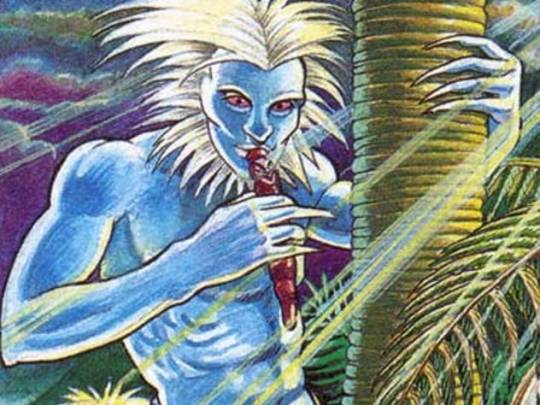
The Maori of New Zealand believe in the Patupaiarehe, also called the Turehu or Pakepakeha, fairy-like people who live deep in the forests and mountains. They have very pale skin (despite the Patupaiarehe which appears on the New Zealand postage stamp above being blue) and either red or light blond hair. Most stories say they’re very small, though some descriptions indicate that they are the size of humans or giants.
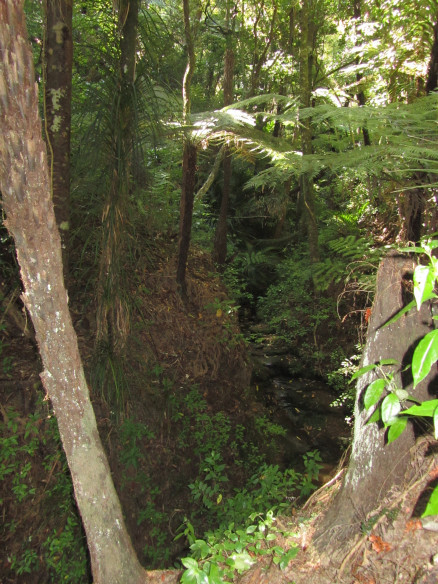
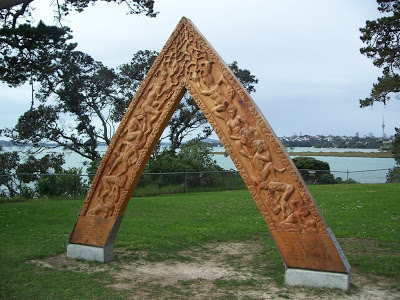
These creatures are rarely seen, as they stay out of the light, only emerging during the twilight. If they met people, they would sometimes play their flutes and put the human under their spell. They would sleep with beautiful women, so some believe that redheads are descended from Patupaiarehe. If they met a man, they would either abuse him and let him go or kill him. To avoid meeting them, people would cover themselves in stinky concoctions or cook food, since fire and light kept the creatures away. However, sometimes the Patupaiarehe would teach humans spells and other useful skills.
The Maori also have tales of the Ponaturi. These creatures look like the Patupaiarehe, except they have claws and live in the ocean.
Nisser and Tomtar
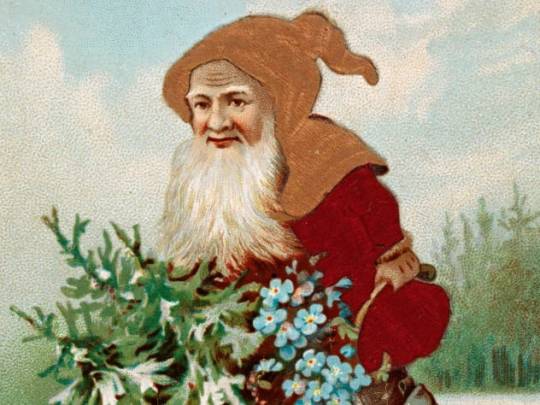
The Norwegian nisse and the Swedish tomte are very similar characters. They usually live solitary lives on farms, staying out of sight of the farmer but taking care of the buildings and animals. Often, they are pictured as small men, the height of a child, with red hats and worn-out clothing. They work very hard to make sure the farm is well-kept, especially focusing on making the horses comfortable.


In return for their work, the creatures only demand respect and a bowl of porridge with butter on Christmas Eve. This bowl is supposed to be left out in the barn so that the creature can eat it in peace.
Native American ‘little people’

Many Native American tribes had stories about little people, so many that they actually deserve their own list. For example, the Mohegans believed in the Makiawisug, small people who lived below Mohegan Hill in Connecticut.

They are nice if they’re taken care of, so the Mohegans would leave them baskets of food. They were not to be spoken about during the summer, when they were active, and not to be stared at; otherwise, they would freeze you and steal your things. In return for the food and respect, the Makiawisug taught the Mohegans how to grow corn and use healing plants, and they kept the Earth fertile.
The Eskasoni in Canada believed in little people, thinking that most of them lived on a hill in Nova Scotia. Children were told not to go near it, lest they be stolen.
The Shoshone tribe believed in little people called the Nimerigar who lived in the Rocky Mountains. They were not very friendly, using bows and poisoned arrows to keep trespassers away.

The Choctaw called them Kwanikosha; these people were feared and supposedly kidnapped boys to test them and figure out their nature.
The Cherokee tribe believed in three different types of little people: the Laurels, the Rocks, and the Dogwoods. They ranged from being good and helpful to being purely malicious.

The Crow tribe called their little people the Nirumbee; they supposedly lived in the Pryor Mountains.

Ebu Gogo
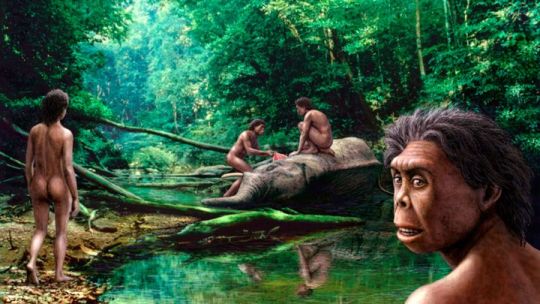
In Flores, Indonesia, they have tales of a people they call the Ebu Gogo. “Ebu” means “grandmother,” and “Gogo” means “he who eats everything.” They supposedly do eat everything they can get hold of, not bothering to cook anything but eating it all raw. This covers fruits, vegetables, and meat, including human meat if they manage to get it. As they use plates made from pumpkins on the island, they would eat those, too, if villagers served them food. Sometimes, they would raid people’s crops. They can also repeat words when spoken to and often climb thin trees.
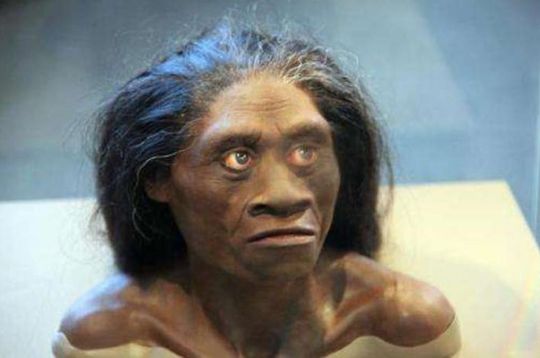
The Ebu Gogo are about 100 centimetres (3’3″) tall, with long hair, long arms and fingers, big stomachs, and ears that stick out. They also walk awkwardly, and the women have such long breasts that they are said to sometimes toss them over their shoulders when they’re moving about. Some people have theorised that these creatures are not purely fictional, rather that they are based on Homo floresiensis, an extinct species that lived on Flores and looked like short humans.
Leprechaun

One of the most famous “little people” myths is that of the Irish leprechaun. Their descriptions vary, though they are usually about 60 to 90 centimetres (2′–3′) tall, with a beard and the face of an old man. Though they look old, they have an incredible spirit and agility. They wear handsome coats and hats, though their description varies across Ireland. They all also have high-quality shoes with shiny buckles. They originally were said to dress in red, the colour of solitary fairies. However, their colour is now green, probably because it’s the colour people associate with Ireland.
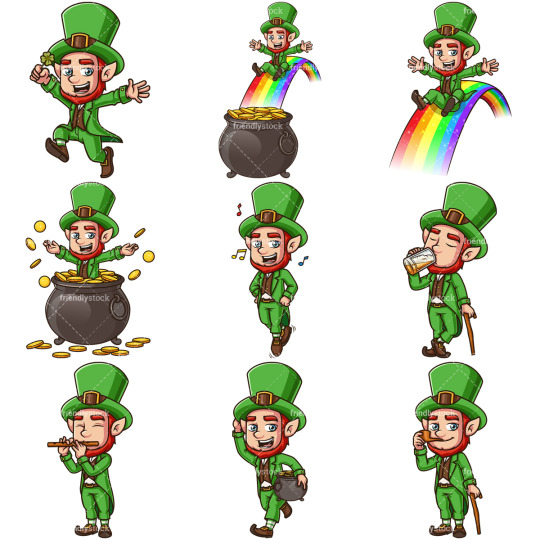
Leprechauns are well-known for their skills in shoemaking. Many stories are about them sneaking out at night to make beautiful shoes, usually for a fee of gold. They are also talented musicians who can play all the traditional Irish instruments. This goes hand in hand with their reputation as jolly creatures who love having a party. They are also magical; they can appear out of thin air and create images of pots of gold at the ends of rainbows, luring in foolish humans. If a human catches them, they can get three magical wishes. However, the leprechaun usually makes sure at least one of them backfires as punishment for being trapped. For this reason, they are known as being mischievous, though they only really do this to people who have harmed them. To avoid these encounters, they hide themselves and their treasure underground.
Woodarjee

The Noongar of the Australian Aboriginals have tales of the Woodarjee. These people look like Aboriginals, but they are only around 30 centimetres (1′) tall. One claimed sighting says the Woodarjee had a big, bushy beard and only wore a loincloth. They travel with spears and other traditional weapons.
If a human comes across them, the Woodarjee might attack, as they can be quite violent. Any wounds sustained from a meeting like this will disappear as soon as the human leaves the area.
El Duende

The story of El Duende came from the Iberian Peninsula and spread to Latin America, the Philippines, and Guam due to colonisation. Originally, El Duende looked like a small man, about 90 centimetres (3′) tall, with a red hat and clothes made from animal hide. Some countries added features, such as him carrying a cane, having a big beard, or not having any thumbs.
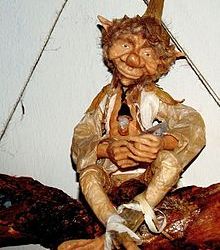
He is said to live in a cave deep in the forest or inside the wall of a child’s bedroom. In some stories, he is evil and will lure children to his cave, where they will be stuck for forever. He might also sneak into their room at night to try to cut their toenails while they’re sleeping, inevitably cutting off their toes entirely. These stories were used to scare children into listening to their parents. In other tales, he is a good creature who helps people who are lost in the forest, guiding them home. Other stories say he protects the forest and animals from anyone who would harm them.
Domovoi
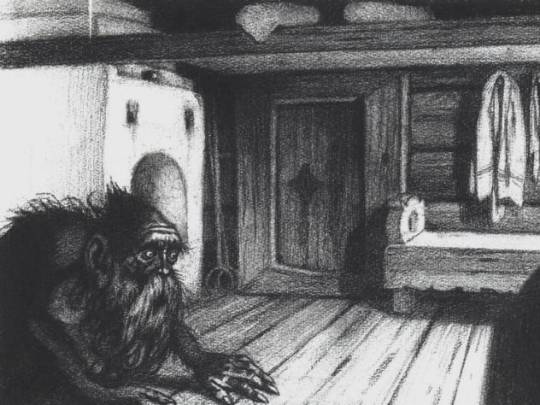
In Slavic folklore, they have house spirits called domovoi. They look like a small man with either a beard or hair all over. Some stories say that they end up looking like the owner of their house, just with a grey beard and sometimes also a tail or horns. These spirits live behind the oven and protect the house, its inhabitants, and their animals. Every house has one, but it is never seen. Instead, people are only aware of it through the noises it makes, such as through footsteps or murmuring.
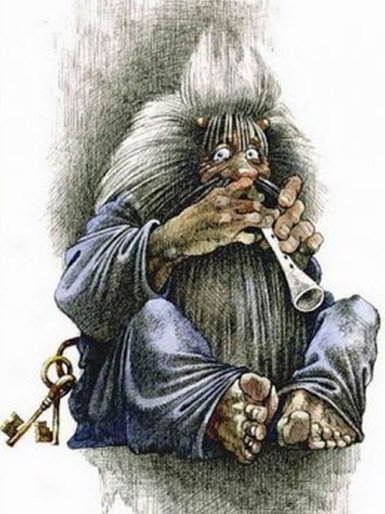
To keep the domovoi happy, people would leave milk or bread in a corner near the oven. When the domovoi feels respected, he does his best to protect the family, but if they upset him, he causes mischief. He does so by riding their horses or cows all night so that they’re too tired to work during the day, tripping them in the dark, or making milk go bad. If people moved, the domovoi would come with them; otherwise, they wouldn’t be safe.
Aziza

In West Africa, the Dahomey people have stories about the Aziza: tiny, forest-dwelling, fairy-like creatures. They look like regular humans, but they’re incredibly small and have wings that look like those of an insect. These magical creatures are purely nice and help out humans who are hunting. They also taught people how to make fire back when humanity didn’t have the knowledge.

In return, people would leave out fresh food for the Aziza. When people realised how useful they were, they started looking for them more often. This caused the shy creatures to retreat further into the forest and avoid human contact more.
Menehune

The Native Hawaiians believe in people called the Menehune, who lived on the islands long before the Polynesians arrived. They were supposed to be about 60 centimetres (2′) tall, though some were no more than 15 centimetres (6 in). They were shy and not often seen by humans, but it’s said that they liked singing, dancing, cliff-diving, and archery. If a human was angry, they’d use magic arrows to pierce the person’s heart and make them feel love instead. They were also excellent craftsmen and engineers, as they would build temples, fish ponds, roads, and more under the cover of night.


Some stories say that the Menehune disappeared after the islands were settled by humans. However, others believe they are still there, causing mischief while hiding. In 1820, the official census of Kauai even listed 65 Menehune as part of the official population
33 notes
·
View notes
Photo

Cryptid of the Day: Nimerigar
Description: The Shoshone people of the Rocky Mountains tell of a race of tiny people called Nimerigar. Though thought to be mythical, some have called into question if there ever was a tribe of short Native Americans. The discovery of mummies found in the Rockys fueled this theory, though it was proven to be a hoax.
42 notes
·
View notes
Text
Centésima Segunda Entrevista com os Ucranianos Da Nimerigar
Centésima Segunda Entrevista com os Ucranianos Da Nimerigar



A Centésima Segunda Entrevista Da Tempestade Conservadora Foi Feita com A Banda Ucraniana Nimerigar e eles lançam pra gente o seu primeiro álbum intitulado como Massacre of the Savages.Eles fazem o formato powertrio e fazem um metal extremo bem compacto e até maligno.Vamos a Entrevista com a Banda.É Bom que se explique que…
View On WordPress
0 notes
Photo
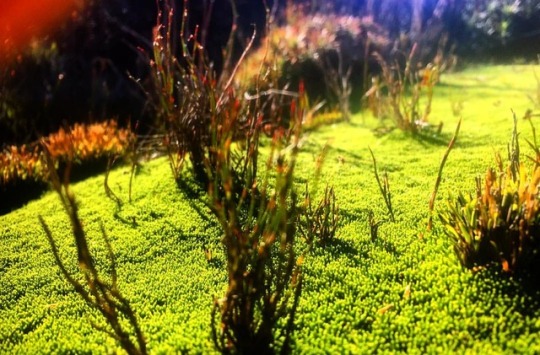
“Mini Moss Forest” (Little people have been part of the folklore of many cultures in human history, including Ireland, Greece, the Philippines, the Hawaiian Islands, New Zealand, Flores Island, Indonesia, and Native Americans. Fairies Brownies / Tomte / Tonttu / Domovoi / Kobolds Alfar / Dwarves Di sma undar jordi Gnomes Nimerigar Goblins / Gremlins Laminak Leprechauns Pixies Menehune Trows Pygmies (in Greek mythology) Abatwa (only partly mythical, see Twa for historical background) Ebu Gogo Ta'ai, or 小黑人 - in the mythology of, or remembered by, the Saisiyat people of Taiwan Patupaiarehe (in New Zealand Maori mythology) https://en.m.wikipedia.org/wiki/Little_people_(mythology) https://www.instagram.com/p/BvStaMvnBVg/?utm_source=ig_tumblr_share&igshid=doimyik4f4aa
0 notes
Text
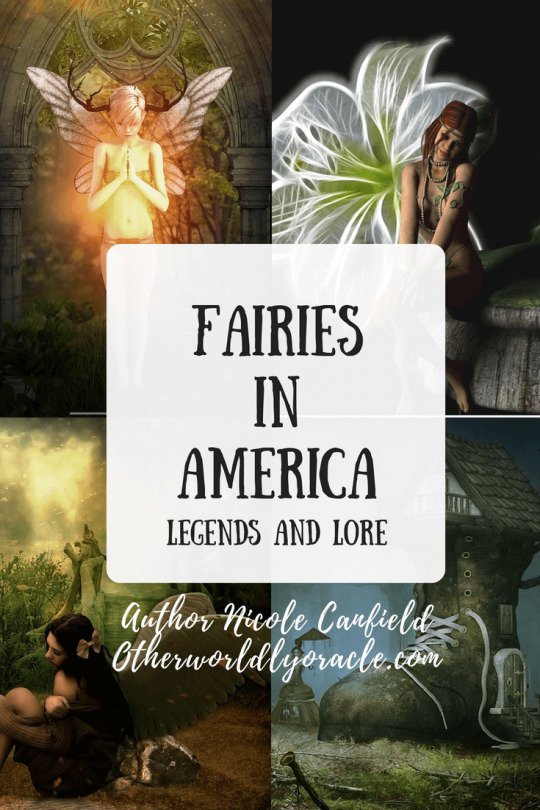
Fairies in America: Fairy Folklore in the U.S. and CanadaFairies in America
The belief in fairies is worldwide. Often we hear stories of green elves, pixies, trolls, and sprites in countries like Ireland and Germany. We don’t hear many stories of Native American fairies or different types of fairies in America. However, fairies are everywhere including in America. Their legends are found in Canada, the U.S., and South America. Because fairies are nature spirits and guardians, they’ve been seen in undisturbed, natural places. The Native Americans tell stories of encounters with the little people – how they helped children or taught shamans how to heal. The fairies in America can be territorial depending on the type of fairy. Come with me on a journey through America to find fairies living in hills and in the nooks of old trees. Some might even be living in your house!
Green Elves in America
Elves come from Scandinavian folklore and legend. According to the Prose Edda, a Medieval Norse work of literature, there are two types of elves – light and dark. In America, the elves are earthly beings who are typically seen dressed in green. In A Witch’s Guide to Faery Folk, Edain McCoy refers to this kind as green elves. Green elves also appear to have a green-tinted skin and sometimes wear green caps on their heads. The green elves seen in America are often shorter in height and are encountered on the edges of forests and in graveyards. They are similar to elves in Irish folklore. These beings live in the trees and so they protect the trees and surrounding wildlife. In Ireland, they are seen near ancient burial mounds, which could indicate their connection with the dead or confirm that “fairyland” is somewhere underground in accordance with old legends.

Green Elves are fairies in America that reside in forests and have green skin and clothing.
House Fairies in America
It is possible that certain fairies and legendary beings travelled to America with our ancestors. The Brownie, a Scottish house fairy, is one of the immigrated European fairies thought to have been brought to Canada and the U.S. with Scottish immigrants beginning in the seventeenth century. Tales are told online from various Americans of signs of brownies living in older Colonial homes. It’s not often they’re discovered living in a modern or newly constructed house – they like to stick to one family and most are attached to the first Scottish immigrant families that settled here. However, some Scottish American people claim to have attracted them into their homes using offerings and other tactics.
The Tomtra is a house fairy that’s been brought to America by Finnish immigrants. Similar to the Brownie’s attachment to Scottish immigrant families, the tomtra is attached to the Finnish immigrants. If you are Finnish American or have Finnish blood, the tomtra may take up residence in your home. The difference between the tomtra and brownie is the tomtra is a bit more mischievous. He will protect your home from invaders, spiritual and physical, but he will also play tricks when he is bored or irritated. One American woman claims she’s had small objects like jewellery and pebbles thrown at her while in her bedroom.
DISCLOSURE: I may earn a small commission for my endorsement, recommendation, testimonial, and/or link to any products or services from this website. Your purchase helps support my work in bringing you information about the paranormal and paganism.
Menehune: Native Hawaiian Fairies
The Native Hawaiians have their own legends of little people called the Menehune. The Menehune were a small indigenous people who lived in Hawaii before the Tahitian people came to reside there. Hawaiian legend tells of these little people building some of the islands’ sacred places such as certain ponds and mounds. They were thought to live deep in the forests and valleys. Compare the Menehune to the Native American legends of little people – there are striking similarities. The Menehune were between six inches and two feet tall, according to legend, and despite their small stature were able to build entire structures over night. Scholars believe the Menehune were the first people of Hawaii, present before the Tahitians, and were driven into the forests during the Tahitian invasion in 1100 AD. Were the Menehune small in stature or were they small in the eyes of the Tahitians? Some claim to see the Menehune, but often the sightings are discredited because they are children. In my opinion, children see fairies in America easier than adults because their minds are still fresh and open.
Shoshone and Cherokee Fairy Legends
Just as the Scottish and English have their fairy folklore, the Native Americans have theirs. The Shoshone tribe believed in a race of tiny people they called the Nimerigar. These tiny people lived in the Rocky Mountains and were aggressive to outsiders. If anyone came near their territory, they’d shoot poisoned-tip arrows at them. The San Pedro Mountain mummy called into question the legitimacy of the Shoshone’s fairy legends. This mummy was a small being discovered in the mountains in 1932. The mummy’s body disappeared in the 1950’s, so we might never know if it was a real fairy body or not.
The Cherokee tribe believed in three kinds of little people: the rock people, the laurel people, and the dogwood people. They each had their own temperaments and each taught the Cherokees different lessons. The rock people hurled rocks at anyone who got close, similar to the nimerigar of Shoshone legend. They were territorial and aggressive. The laurel people were mischievous and played tricks on people for fun comparable to many of the European fairy legends. The dogwood people were good-natured and known to help heal. There have been fairies in America for just as long as they’ve been in Europe.
DISCLOSURE: I may earn a small commission for my endorsement, recommendation, testimonial, and/or link to any products or services from this website. Your purchase helps support my work in bringing you information about the paranormal and paganism.
Real Encounters with Fairies in America
Fairies in America don’t just live in legend and lore, they’ve shown themselves to lucky individuals. In the late 1800’s, an entire group of people saw fairies flying above Chimney Rock in North Carolina. It was documented by the nearest town’s scholars. An American woman claims she’s seen numerous fairies during paranormal investigations including a green elf in a cemetery, a sylph (air fairy) that flies by her house, and even has photographic evidence of the existence of the Green Man in America. Real encounters with fairies in America have been happening for hundreds of years and still happen today. Because of my articles on fairies, I receive emails from people who have pictures of fairies in the forests of America. Whether fairies are real, physical beings or spiritual beings, I cannot decide. But I know they exist in one form or another and they are prevalent in America.
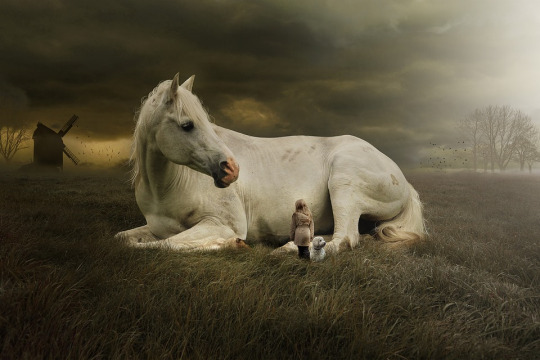
The Native Americans have many legends of fairies in America.
0 notes
Text
Xác ướp người tí hon bí ẩn được phát hiện dưới chân núi khiến các nhà khoa học bối rối
Năm 1932, khi đang đào vàng ở dãy núi San Pedro, bang Wyoming, Mỹ, Cecil Main và Frank Carr đã có một phát hiện chấn động: xác ướp một người lùn.
Dựa trên kích thước và đặc điểm của xác ướp này, đây có thể là thành viên tộc người lùn từng cư ngụ ở Mỹ.
Kho tàng truyện dân gian của người bản địa có kể về một chủng người lùn hay người tí hon (Little People). Phụ thuộc vào truyền thuyết của mỗi bộ lạc, những sinh vật tí hon này sẽ được nhìn nhận là các linh hồn, phù thủy, người lùn tai quái, nàng tiên, hay thậm chí ác quỷ.
[caption id="attachment_186447" align="aligncenter" width="500"] Ảnh chụp tại tiệm ảnh Sturm, thành phố Cody, bang Wyoming, Mỹ. Hiện nằm trong Bộ sưu tập Lịch sử Miền Tây, tại Trung tâm Lịch sử Miền Tây trực thuộc Cao đẳng Casper. Cây thước đo bên cạnh là theo đơn vị inch (1 inch = 2,54 cm).[/caption]
Di thể thực tại của người tí hon đã được báo cáo ở nhiều nơi, ví như ở miền tây nước Mỹ, đặc biệt ở bang Montana và bang Wyoming. Trong hầu hết các trường hợp chúng được phát hiện bên trong hang động. Người ta đã tiến hành khám nghiệm các thi thể này, nhưng kết quả không phải lúc nào cũng được tiết lộ cho công chúng.
Ngoài ra, các thi thể của chủng người tí hon này thường biến mất một cách bí ẩn. Theo nhà khảo cổ học Lawrence L. Loendorf, “tất nhiên các thi thể luôn được gửi tới một trường đại học địa phương hay tới Viện Smithsonian để tiến hành khám nghiệm, nhưng cả mẫu vật lẫn kết quả khám nghiệm đều mất tích sau đó”.
Sau vụ phát hiện xác ướp Pedro, truyền thuyết về chủng người Nimerigar lại một lần nữa tái xuất.
Nimerigar là chủng người tí hon huyền thoại, được đề cập đến trong kho tàng truyện dân gian của tộc người Shoshone cư trú tại Dãy núi Rocky ở Bắc Mỹ. Tộc người Nimerigar sinh sống gần sông Wind và dãy núi Pedro ở bang Wyoming, Mỹ. Họ tấn công người da đỏ bằng cây cung tí hon trang bị tên tẩm độc.
[caption id="attachment_186450" align="aligncenter" width="573"] Xác ướp tí hon này chỉ cao khoảng 16,5 cm trong tư thế ngồi, và 35,5 cm trong tư thế đứng. Nó có gương mặt lớn tuổi, thuộc giống đực, với phần đầu phẳng bẹt, đôi mắt to cùng cái miệng rất rộng. Da nhăn nheo, có màu nâu.[/caption]
Giống với các truyền thuyết khác, Nimerigar chỉ được coi là một câu chuyện dân gian không thực cho tới khi xác ướp trên núi Pedro được phát hiện.
Khi tiến vào hang động, Cecil Main và Frank Carr hy vọng tìm được vàng, nhưng thay vào đó lại phát hiện được xác ướp hình thù kỳ dị này. Xác ướp tí hon này chỉ cao khoảng 16,5 cm trong tư thế ngồi, và 35,5 cm trong tư thế đứng. Nó có gương mặt lớn tuổi, thuộc giống đực, với phần đầu phẳng bẹt, đôi mắt to cùng cái miệng rất rộng. Da nhăn nheo, có màu nâu. Xác ướp được bảo quản quá tốt đến nỗi móng tay vẫn còn nguyên, phần đỉnh đầu được bọc trong một lớp thịt màu tối giống thạch vẫn còn độ đàn hồi khá tốt.
[caption id="attachment_186449" align="aligncenter" width="675"] Kết quả chụp X-quang (hình thứ ba bên phải) hé lộ xác ướp Pedro có bộ xương hoàn chỉnh giống người, với đầy đủ các xương sườn.[/caption]
Cecil Main và Frank Carr đã mang xác ướp này đến thành phố Casper, bang Wyoming. Nhiều nhà khoa học nổi tiếng trên khắp nước Mỹ đã đến chiêm ngưỡng phát hiện đáng kinh ngạc này. Hai tay thợ săn vàng đã bị nghi ngờ phát tán một trò bịp để kiếm tiền với mẫu vật mới phát hiện. Tuy nhiên, khi các nhà nhân chủng học tiến hành khám nghiệm, kết quả rõ ràng cho thấy xác ướp này là thật.
Kết quả chụp X-quang hé lộ xác ướp Pedro có bộ xương hoàn chỉnh giống người, với đầy đủ các xương sườn. Xét nghiệm cũng cho thấy xác ướp này bị sát hại một cách dã man; xương sườn bị chấn thương, một xương cổ bị vỡ, hộp sọ vỡ vụn do bị đập mạnh, khiến mô não và máu đông lòi ra tại phần thịt mềm trên đỉnh đầu.
Sau khi hoàn tất các xét nghiệm, các nhà khoa học kết luận xác ướp này thuộc về một người trưởng thành khoảng 65 tuổi tại thời điểm tử vong. Một đặc điểm kỳ dị là hàm răng người này quá nhọn, với đầy đủ một bộ bốn chiếc răng nanh (răng nanh chỉ có ở động vật có vú, bao gồm con người).
Những xét nghiệm này được thực hiện bởi Bảo tàng Lịch sử Tự nhiên Hoa Kỳ và được kiểm định tính chân thực bởi Khoa Khảo cổ của Đại học Harvard. Tuy nhiên, khi xác ướp này được tái phân tích bởi các nhà khoa học từ Đại học Wyoming, họ kết luận thi thể này thuộc về một đứa trẻ bị bệnh.
Đáng tiếc là, người ta không thể tiến hành khám nghiệm bổ sung, vì giống với rất nhiều các hiện vật gây tranh cãi khác, không ai biết tung tích hiện nay của xác ướp này. Xác ướp này được trưng bày một vài năm. Sau đó một doanh nhân tên Ivan T. Goodman ở thành phố Casper đã mua nó. Khi ông này mất năm 1950, mẫu vật rơi vào tay Leonard Walder, một doanh nhân từ New York. Ông này qua đời vào những năm 80. Kể từ đó không ai biết tung tích xác ướp này.
Năm 2005, John Adolfi từ thành phố Syracuse, bang New York đã trao giải 10.000 USD cho xác ướp, tuyên bố nó bác bỏ học thuyết tiến hóa. Tuy vậy, cho tới nay xác ướp này vẫn chưa được tìm ra.
Liệu nó đã bị thất lạc, hay tệ hại hơn, đã bị chủ định giấu kín để che giấu bằng chứng thực tế về sự t��n tại của một chủng người lùn, hay người tí hon trong lịch sử nhân loại?
Quý Khải
from Đại Kỷ Nguyên - Feed - https://ift.tt/2N1zS4o
via IFTTT
0 notes
Text
Ahh victory! Am I the only one who sometimes roots for the monsters? Asking the question, "What are you people even doing there?" Fight the good fight little Nimerigar friends. https://t.co/fx5RAbQxBd
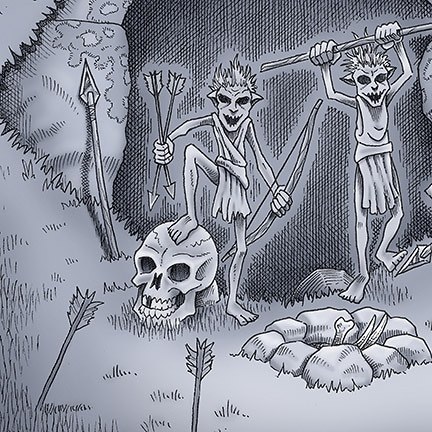
#children's books#darkline#zak#illustration#monsters#alphabet book#picture book#creatures#monstrousalphabet#creepy#nimerigar#monster alphabet#abc#abc book#d&d
0 notes
Text
Lore Episode 14: The Others (Further Reading)
This is in no way an official source list used by Aaron Mahnke, but is more meant to be a starting point meant for anyone wanting to dig further into any particular topic.
Warning: Images of the San Pedro Mountains Mummy appear in most of the articles concerning it, and it can be quite distressing. Be prepared for mummified human remains if you read any of the articles.
General Related Folklore:
[Wikipedia] Pygmy (Greek mythology)
[Theoi.com] Pygaioi
[Wikipedia] Alux
[Article] The legend of Maya Aluxes
[Article] The Legendary Alux Does This Mayan Mythological Creature Really Exist?
[Wikipedia] Pukwudgie
[Wikipedia] Trow (folklore)
[Article] The Trows
[Wikipedia] Púca
[Blog post] The Púca (Pooka) In Irish Folklore
[Article] Tales of Pooka
The Nimerigar and the San Pedro Mountains Mummy:
[Wikipedia] Nimerigar
[Web page] Nimerigar (Nunumbi)
[Wikipedia] San Pedro Mountains Mummy
[Blog post] Little People & the Pedro Mountain Mummy
[Article] Nimerigar: Mythological Race Of Little People Living In Wyoming
[Article] The Mystery of the San Pedro Mountains Mummy
[Video] Ancient Race Of "Tiny People" Discovered In Wyoming?
[Article] San Pedro Mountains Mummy
[Blog post] The Pedro Mountain Mummy
[Video] The Mystery of The San Pedro Mountains Mummy | The Truth Behind Mummified Pygmy
[Article] Pedro – The mysterious tiny mummy from the mountains in Wyoming
[Article] The Truth Behind the Disturbing Mystery of the San Pedro Mountains Mummy
Ebu Gogo and Homo Floresiensis:
[Wikipedia] Ebu gogo
[Video] The Ebu GoGo | A Modern Mystery | The Hobbit
[Blog post] Far Weirder Than Hobbits
[News report] Villagers speak of the small, hairy Ebu Gogo
[News report] Age of 'Hobbit' species revised
[Video] Ebu Gogo (A Real Hobbit?)
[Article] Ghosts, Hobbits or Cannibals? The Legend of Ebu Gogo, the Secret Tribe of Wild Grandmother Flesheaters
[News report] New Homo Floresiensis Dates May Quash Cryptozoology Theories About 'Hobbits'
[Wikipedia] Homo floresiensis
[News report] 'Hobbit' species did not evolve from ancestor of modern humans, research finds
[Web page] Homo floresiensis
The Dover Devil:
[Wikipedia] Dover Demon
[Article] 12 Creepy Facts About The Dover Demon
[Article] The “Dover Demon” Petrified Four Teens In A Small Town In 1977 – And Remains Unexplained To This Day
[Article] The Dover Demon
[Blog post] The Dover Demon Deconstructed
[News report] Decades later, the Dover Demon still haunts
[Video] The Dover Demon (After Dark)
[Wikipedia] Grey alien
[Video] The Folklorist: The Dover Demon
0 notes